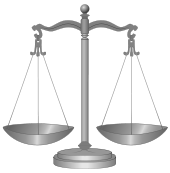- Unity of invention
-

Patent law
(patents for inventions)Overviews Patents · History
Economics · Societal viewsProcesses Application · Prosecution
Licensing · InfringementPatentability Patentable subject matter
Novelty · Utility
Industrial applicability
Person skilled in the art
Prior art · InventorshipAdditional requirements Sufficiency of disclosure
Unity of inventionBy region / country Europe
Japan
United States
AustraliaSubject-matter Biological patent · Gene patent
Business method · Tax patent
Chemical patent · Software patentCategory · Glossary In most patent laws, unity of invention is a formal administrative requirement that must be met by a patent application to become a granted patent. Basically, a patent application can relate only to one invention or a group of closely related inventions. The purpose of this requirement is administrative, as well as financial. That is, the requirement serves to preclude the option of filing one patent application for several inventions, while paying only one set of fees (filing fee, search fee, examination fee, renewal fees, and so on). Unity of invention also makes the classification of patent documents easier.
When a patent application is objected to on the ground of a lack of unity, it may be still considered for patent protection, unlike in the case where the invention is found to be lacking novelty. A divisional application can usually be filed for the second invention, and for the further inventions, if any. Alternatively, a patent prosecutor may make a technical argument that there is unity of invention.
Contents
Jurisdictions
European Patent Convention
Main article: Unity of invention under the European Patent ConventionUnder European patent practice and case law, lack of unity (of invention) can appear either "a priori", before the prior art was examined, or "a posteriori", after the prior art was examined. An a posteriori lack of unity usually results from a lack of novelty or inventive step of the subject-matter of one independent claim.
Patent Cooperation Treaty
Under the Patent Cooperation Treaty (PCT), an international application, which is also called PCT application, "shall relate to one invention only or to a group of inventions so linked as to form a single general inventive concept".[1] If the requirement of unity of invention is not met, the International Searching Authority (i.e., the patent office in charge of carrying out the international search) "is entitled to request the applicant to pay an additional search fee for each invention beyond the first which is to be searched".[2][3]
In reaction to such a request from the International Searching Authority (ISA), the applicant may pay all or some of the requested additional search fees, and the International Searching Authority (ISA) then establishes the international search for all or some of the inventions or groups of inventions, respectively.[2] The applicant may also decide not to pay any of the additional search fees, and, in such case, the ISA does not carry out a search for the inventions or groups of inventions for which no search fees have been paid. The international search report (ISR) is then established only for the first claimed invention.[2]
If the applicant disagrees with the ISA’s finding of lack of unity of invention, the additional fees may be paid under protest.[2] In the protest procedure, the applicant files a reasoned statement explaining why it considers that the requirement of unity of invention has been complied with, or that the number of additional fees required is excessive.[2][4] After payment of the additional search fees and, if required, of a protest fee,[5] the protest is examined by a review body. If the review body finds the protest justified, it orders the total or partial reimbursement of the additional search fees, and, if applicable, the protest fee, to the applicant.[2] When, for instance, the European Patent Office acts as ISA, the review body in charge of examining the protest consists of three members: "the head of a directorate, normally the head of the directorate by which the invitation to pay additional fees was issued, an examiner with special expertise in unity of invention and, normally, the examiner who issued the invitation." [6]
United States
In U.S. patent law, applications that claim more than one distinct invention may be subject to restriction to a single invention, and the applicant may prosecute the remaining invention(s) by filing a divisional application(s). A "restriction requirement" will typically present the different inventions based on the claims within the application, and the applicant may elect which invention he would prosecute.
See also
- Patentability
- Novelty
- Inventive step and non-obviousness
- Industrial application
- Sufficiency of disclosure
References
- ^ Rule 13.1 PCT
- ^ a b c d e f Practical Advice, The consequences of a finding by the ISA of lack of unity of invention, PCT Newsletter, August 2008, p. 6.
- ^ Article 17(3)(a) PCT, Rule 40.1 PCT
- ^ Rule 40.2(c) PCT
- ^ Rule 40.1(iii) PCT
- ^ Decision of the President of the European Patent Office dated 24 June 2007 providing for review panels for the implementation of the protest procedure under the PCT, Special edition No. 3 OJ EPO, p. 140. This decision is also referred to as: "Decision concerning the PCT protest procedure".
External links
- European Patent Convention (EPC)
- Patent Cooperation Treaty (PCT)
- Title 35 of the United States Code (35 U.S.C.)
Categories:- Patent law
Wikimedia Foundation. 2010.
